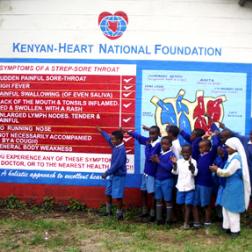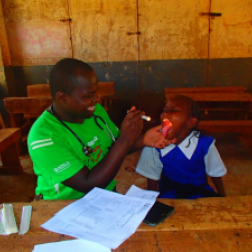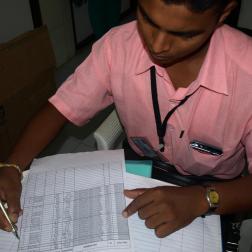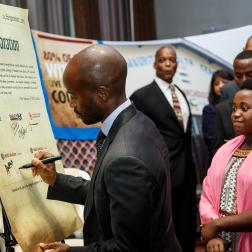Who is at risk?
ARF is most commonly between the ages of 5 – 20 years, though episodes of ARF have been recorded in children as young as 3 years or in adults into their 30s. This age distribution is similar worldwide.
Risk factors for ARF are generally considered in three main categories:
Environmental factors
- Including overcrowding, limited nutrition, limited access to health services. These risks generally occur in developing countries or in vulnerable communities in high-income countries. Efforts to reduce overcrowding, support socioeconomic development and increase access to health services are known as primordial prevention.
Individual factors
- Genetics or a family history ARF or RHD may increase the risk of developing ARF after a strep throat infection. Research to understand the effect of genetics on ARF risk is underway around the world.
Bacterial factors
- Some strains of the strep bacteria are more likely to cause ARF than others. Testing to identify different strains of GAS infection can difficult and is more often used in research than clinical practice.
Globally, ARF and RHD are more common in Indigenous communities than non-Indigenous communities. Disparity may be very pronounced. Indigenous Australians are 122 times more likely to live with RHD than non-Indigenous Australians. In New Zealand, 91% of people with ARF are Māori or Pacific peoples.
Symptoms of RF
Symptoms of ARF usually begin two or three weeks after a strep infection. The most common symptoms of ARF are:
Joint pain
Pain most commonly in ankles, knees, hips, elbows or shoulders. Less commonly the fingers or toes may be involved. The joint may be hot or swollen. Joint pain may move from one joint to another.
Fever
Temperature greater than 38°C / 100.4°F
Feeling sick
People with ARF may feel unwell with stomach pain, feeling tired or feeling short of breath.
Skin changes
About 1 in 10 people with ARF will have a skin rash (erythema marginatum). A small number of people will have small lumps underneath the skin (subcutaneous nodules).
Abnormal movements
RF can sometimes cause a disturbance of the brain and nervous system known as Sydenham’s Chorea. This may cause uncontrollable movements or changes in mood.
Symptoms of ARF usually last for one or two weeks. Abnormal movement symptoms may last for longer. Young people with ARF may need to go to hospital for further tests or medicines. It is important that people with symptoms of ARF have an accurate diagnosis to make sure they get the right treatment.
Diagnosis
There are no specific blood tests or scans to test for ARF. Instead, doctors and health workers use lots of different kind of information to decide whether someone has ARF. Once all the information has been gathered doctors can use guidelines to determine whether someone has ARF. Tests may include:
Physical examination
This usually includes listening to the heart and lungs with a stethoscope and checking sore joints.
Blood tests
To check for markers of inflammation and recent strep infection.
Heart tracing (ECG or EKG)
To check heart rate and rhythm, looking for signs of heart muscle inflammation (carditis).
Heart scan (echocardiography, echo)
To check for changes to the heart muscle and heart valves sometimes associated with ARF.
Technical information on diagnosis of ARF for health professionals can be found in the treatment section of this website.
Treatment
Some people with ARF will only require pain medicine for joint pain and fever. Symptoms of ARF usually begin to improve after a few weeks.
ARF can cause inflammation of the heart valves and muscle. This can cause heart failure, when the heart is unable to pump blood effectively. In this case people with bed rest may need medicines for heart failure and bed rest. A small number of people may need heart surgery for ARF.
The most important treatment of ARF is prevention of further episodes to prevent the development of RHD. This is known as secondary prophylaxis usually means having regular antibiotic injections.






